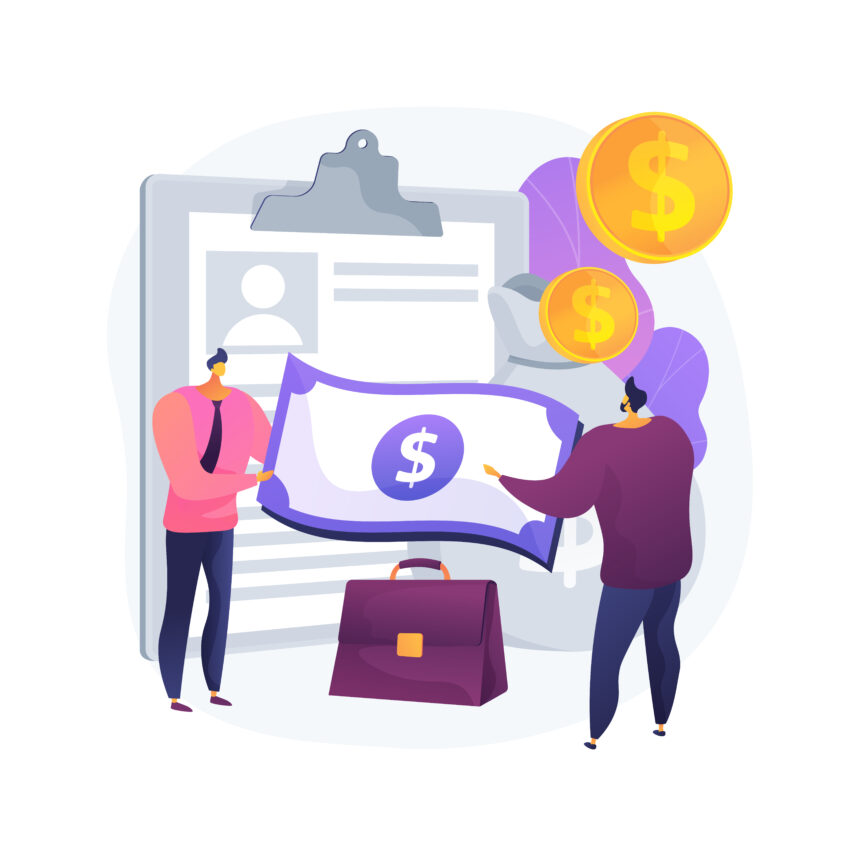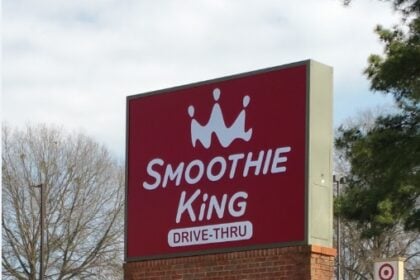Tiny loans, huge ripple effects. Microloans are back in the mainstream, helping overlooked founders turn “someday” into “opening day.”
Why microloans are suddenly everywhere again 💡
When traditional credit tightens, the first doors to slam shut are usually for the people who need them most: first-time founders, sole proprietors, and workers earning just enough to stay afloat but not enough to impress a loan committee. Microloans step into that gap with small-dollar capital, flexible terms, and on-the-ground support that big banks rarely offer.
If you want the vibe in one sentence: microloans turn “no credit history” into “new business history.” That’s why they’re trending in community finance circles and small business TikTok — not as charity, but as rocket fuel for local economies.
For a broader culture-and-economy backdrop, see BigTrending’s lens on where technology meets human ingenuity, which tracks how small tools and smart systems unlock outsized change — the same dynamic microloans ride.
Microloans, explained (it’s more than “tiny money”) 🧰
What counts as a microloan?
In the U.S., we’re typically talking $500 to $50,000, often deployed by community development financial institutions (CDFIs), nonprofit lenders, and mission-driven programs. A concise primer from the U.S. Small Business Administration lays out the basics in its overview of the SBA Microloan Program.
Terms that actually flex
Because these funds are designed for borrowers outside traditional underwriting, interest rates and repayment terms are calibrated for reality, not theory. Many programs combine capital with coaching — budgeting, marketing basics, bookkeeping templates — so the loan buys skills as well as supplies.
Who benefits?
- Underserved founders who don’t have collateral or a long credit file.
- Immigrant, women, and minority-owned businesses that often face higher denial rates with conventional lenders.
- Microenterprises — think caterers, mobile detailers, Etsy sellers, neighborhood coffee carts — where $5,000–$15,000 can be the difference between “idea” and “invoices.”
If you want a quick global-to-local context refresher, the encyclopedic overview of microfinance clarifies the field’s roots and how microloans fit into a larger financial inclusion toolkit.
The post-pandemic spark: why now? 🔥
The COVID shock left scars: closed credit lines, thinner savings, patchy income. As banks tightened, community lenders and microlenders became first responders for Main Street. That surge built muscle memory — and a new expectation that small, fast, relationship-based loans can keep a local economy alive.
“Microloans helped me kickstart my own business when banks turned me down. They believed in my potential!” — a TikTok user
“Got my first microloan and it was a game-changer. Opened doors that were previously shut.” — an X user
“Tech + microloans = faster approvals and fewer hoops. I’m in.” — a Redditor
What microloans actually do in a neighborhood 🏪
1) Kickstart entrepreneurship
Microloans fund the boring-but-critical stuff: licenses, equipment, packaging, a first month of rent. That jumps the moat between concept and cash flow — especially for businesses that don’t look like a venture pitch deck.
2) Create jobs (often faster than big projects)
A new food stall hires two part-time workers. A seamstress brings on an apprentice. A landscaper adds a crew member for spring. Microloans multiply into shifts, paychecks, and momentum.
3) Build credit, not just businesses
On-time payments get reported, which builds the borrower’s credit profile and unlocks bigger financing later. The second loan might be $25,000. The third could be a bank line of credit.
Inside a $12,500 microloan: a mini case study 📦
Meet Janelle, a home baker who outgrew her kitchen during the holidays. A $12.5K microloan covered a commercial mixer, a health permit, cottage-to-commercial transition fees, branded packaging, and a three-month lease at a shared kitchen.
- Month 1: New capacity = 2× weekly output.
- Month 2: Lands a small grocery account; hires one part-time packer.
- Month 4: Moves to a tiny storefront. Uses payment history to apply for a small line of credit for seasonal flour and butter buys.
Key point: The loan didn’t change her baking talent — it changed her constraints.
The equity angle: why microloans matter for inclusion ⚖️
Microloans don’t fix every structural barrier — but they attack one of the most stubborn: access to first capital. That’s especially relevant for borrowers denied or discouraged by traditional institutions. Programs focused on inclusion can target neighborhoods where capital flight has been a decades-long story, then reverse the plot by seeding dozens of micro-businesses.
A good U.S.-specific starting point is the SBA Microloan Program, which funds nonprofits that lend to very small businesses and offer technical assistance. If you’re mapping next steps, it’s a clean rundown of loan caps, uses, and the training piece many borrowers overlook.
For a snapshot of how peer-backed models took root stateside, this piece on Kiva offering no-interest microloans in the U.S. shows how social networks and community endorsements help underwrite borrowers outside the usual credit boxes.
How tech is supercharging microloans 🖥️
- Mobile-first applications: Snap a photo of your EIN letter, connect your bookkeeping app, and track disbursement in a dashboard.
- Alternative underwriting: Lenders can evaluate cash-flow data, gig income, and platform sales — not just a FICO score.
- Automated reminders + friendly nudges: Reduce missed payments and help borrowers stay on plan without getting buried in mailers.
- Mentor marketplaces: Tap pros for a one-hour chat on pricing, product-market fit, or pop-up retail.
Pro tip: Before applying, assemble a one-page plan — what you’ll buy, expected revenue lift, and how that supports repayment. Lenders love clarity more than pitch flair.
The real challenges (and how smart programs address them) 🧩
High demand, limited supply
Microlenders aren’t infinite. When funds run dry, waitlists grow. Strong programs replenish capital through public-private partnerships and revolving funds so dollars get re-lent as payments come back.
Over-indebtedness risk
Debt is a tool, not a lifestyle. Quality programs bundle financial education — cash-flow planning, margin math, tax prep — to keep borrowers from stacking loans or using expensive stopgaps between payments.
Scaling what works
Replicating successful local models nationally is hard. The most promising playbooks are regional hubs with local partners, shared underwriting tech, and rigorous outcomes tracking.
What to have ready before you apply 📋
- Receipts-ready plan: Itemized list of how you’ll use funds (equipment, permits, inventory).
- Three months of numbers: Bank statements or POS exports showing sales or income patterns.
- A realistic repayment model: Weekly or monthly amount tied to revenue cycles (farmers’ market? holiday peak?).
- A backup plan: What you’ll cut or pause if revenue dips for a month.
Good friction vs. bad friction in microlending 🧭
Not all hoops are harmful. Good friction (a quick budget check, a mentoring session) improves outcomes and reduces default. Bad friction (duplicate forms, unclear timelines) drains time and momentum. Look for lenders that explain their process in plain language and offer human help when you hit a snag.
Policy tailwinds and the “what’s next” forecast 🌤️
Expect three forces to shape the next 24 months:
- Digital rails — Application-to-decision windows keep shrinking as lenders lean on payroll, payment, and e-commerce integrations.
- Stronger public-private corridors — Cities and states increasingly seed microlender funds to revive corridors and incubate jobs.
- Outcome-based funding — More capital tied to real outcomes (job creation, survival past 24 months) rather than vanity metrics like “applications processed.”
If you’re a founder, that translates to faster timelines, clearer expectations, and better post-loan support.
A quick reality check: microloans vs. the bigger system 🧯
Critics aren’t wrong that microloans can’t fix health costs, childcare deserts, or predatory rents. But they can turn a viable concept into a testable business — and that’s how ecosystems change: one verifiable success at a time. The point isn’t that a $10,000 loan solves inequality; it’s that thousands of $10,000 loans create a denser web of owners, employers, and taxpayers where it’s been missing.
Borrower playbook: 7 practical steps to boost approval odds ✅
- Cut fluff; sharpen your ask. “$8,200 for a trailer-mounted pressure washer and safety gear” beats “equipment.”
- Prove demand. Preorders, letters of intent, or even a pop-up waitlist show you’re not guessing.
- Show the math. “Loan adds 40 weekly orders × $12 margin = $480/week; payment is $85/week.”
- Pick the right lender. Match sector focus (food, crafts, trades) and geography.
- Commit to coaching. Say yes to the workshop; you’ll avoid costly mistakes in month two.
- Automate payments. Keep cash flow clean with calendar reminders and autopay.
- Plan your step-up. Treat this as Loan #1 on a ladder, not a finish line.
The cultural shift: ownership at the edges of the map 🗺️
This comeback isn’t a fad; it’s the normalization of small-dollar, high-touch finance that sees people as more than a credit score. When microlending is abundant and dignified, more people get a shot at owning the thing they’re great at — and neighborhoods get stickier, richer in services, and better at keeping money local.
If you want to see how local capital can drive transformation at scale, read BigTrending’s perspective on where technology meets human ingenuity — the patterns it surfaces (small tools, smarter systems, human-first design) are exactly what microlenders are deploying.
FAQ: All about microloans
What exactly is a microloan?
A microloan is a small-dollar loan (often $500–$50,000) designed for very small businesses and founders who can’t access traditional bank credit — the essence of microloans. A helpful primer is the SBA Microloan Program overview.
How do microloans help reduce income inequality?
By funding first steps — permits, tools, inventory — microloans help launch revenue, build credit history, and create jobs. That’s how microloans chip away at local inequality. For context on the broader field, see this overview of microfinance.
Are microloans available to everyone in the U.S.?
Programs prioritize underserved communities and first-time founders. Demand often exceeds supply, but more lenders and city/state funds are expanding access to microloans.
What are the risks with microloans?
Over-indebtedness and thin margins are real. Good programs pair capital with coaching and repayment plans that fit seasonal cash flow — the smart way to use microloans.
What should I prepare before applying for a microloan?
A one-page plan, 3–6 months of bank/POS data, a realistic repayment model, and a short list of exactly what microloans will purchase for your launch or expansion.









